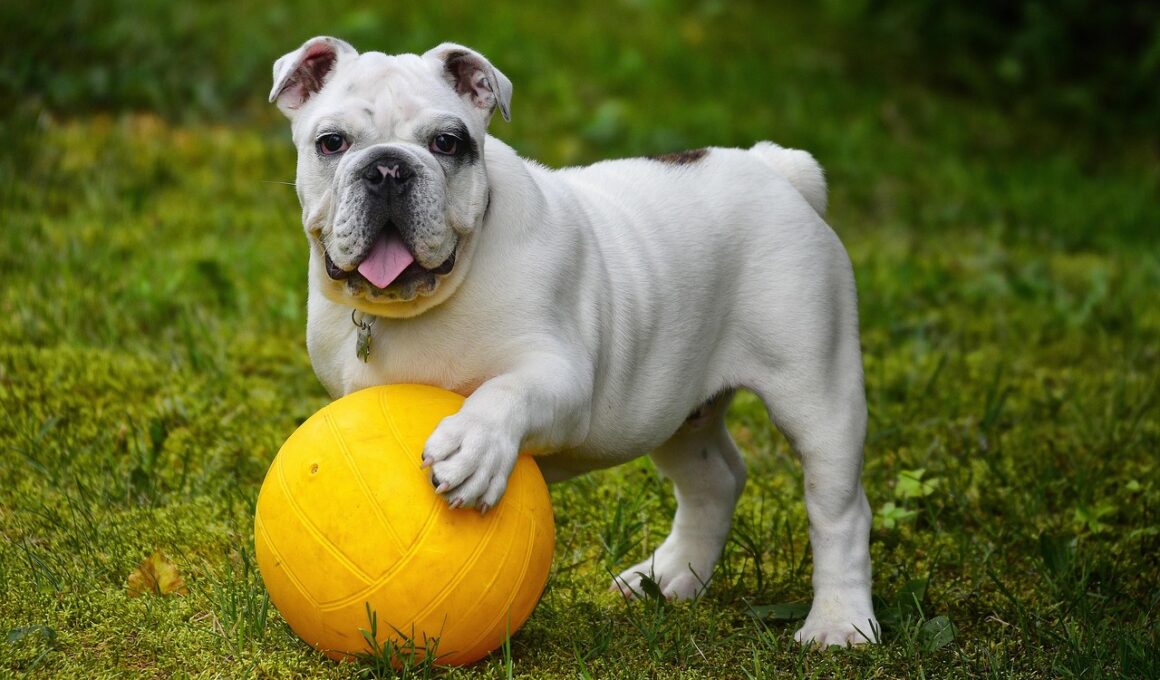Vitamin D Toxicity in Dogs: Symptoms and Prevention
Vitamin D is essential for a dog’s health, aiding in calcium absorption, bone health, and immune function. However, an excess of this vitamin can lead to toxicity, presenting serious health complications. In canine diets, vitamin D sources include certain fish, fortified dog foods, and supplements. It can be beneficial, but the dose must always be carefully monitored. Too much vitamin D can result from over-supplements or accidental ingestion of foods meant for humans that are not suitable for dogs. One critical aspect of managing vitamin D levels is consulting with a veterinarian regarding your dog’s diet. Your vet can offer insights into appropriate vitamin D levels based on your dog’s age, weight, and overall health. Regular check-ups can help to avoid vitamin D excess and potential poisoning. If you suspect an issue, immediate veterinary attention is imperative. Symptoms can include vomiting, lethargy, and more severe neurological problems. Early intervention can significantly enhance the prognosis for dogs affected by vitamin D toxicity. Understanding this nutrient’s role within your dog’s diet is crucial for maintaining optimal health.
Dogs, like humans, can experience vitamin D toxicity, leading to several health complications. One possibility is hypercalcemia, a condition resulting from excessive calcium levels in the bloodstream. Hypercalcemia can lead to symptoms like increased thirst, frequent urination, and even kidney damage. It may also cause gastrointestinal problems such as diarrhea and vomiting. When overly high levels of calcium occur, organs begin to function improperly, leading to more serious health conditions. If you notice abnormal behaviors in your dog or are worried about their food or supplement intake, consult a veterinarian immediately. It’s essential to be aware of the symptoms. If detected early, treatment can prevent long-term damage and promote recovery. In some cases, hospitalization may be necessary for severe toxicity cases, while mild incidents may only require discontinuation of vitamin D intake. Monitoring the amount of vitamin D in your dog’s diet is essential. Always read labels and consider homemade diets. Research vitamin D levels in all foods and supplements. Doing so can help to prevent unintentional overdoses. Keeping your furry companions safe from toxicity means taking the time to manage their nutritional intake, ensuring a balanced approach to vitamin necessities.
Symptoms of Vitamin D Toxicity in Dogs
The symptoms of vitamin D toxicity in dogs can vary significantly based on the severity of the condition. A wide range of signs can indicate that something is amiss, so being vigilant is essential. Common initial signs include excessive thirst and urination, which occurs as the body attempts to rid itself of excess calcium. Digestive issues may manifest as vomiting or diarrhea. Some dogs may become lethargic or less active than usual, prompting concern from pet owners. In more alarming cases, neurological symptoms like tremors or seizures can occur. Skin issues may also arise, indicating a potential hormonal imbalance, which can be linked to excessive vitamin D. If you notice these symptoms, acting swiftly is critical. Veterinary care can involve blood tests to measure calcium and vitamin D levels, allowing for an accurate diagnosis. Treatment may involve intravenous fluids to rehydrate your dog and manage calcium levels. In some situations, anti-nausea medications or corticosteroids may be required. Hydration, rest, and monitoring are vital during recovery. Understanding these symptoms will enable you to act quickly and keep your dog safe.
Preventing vitamin D toxicity in dogs revolves around nutrition, awareness, and regular veterinary care. First, provide a balanced diet tailored to your dog’s needs. Consult your veterinarian about appropriate commercial dog foods or supplements containing safe vitamin levels. Avoid giving dogs human foods that may have excessive vitamin D, such as fatty fish, liver, or particularly high-fortified foods. Education plays a pivotal role in prevention. Understanding the symptoms mentioned earlier allows for quicker recognition should toxicity arise. Be attentive to potential accidental exposure through bait or insect poisons containing vitamin D components. Keeping these substances out of reach ensures less risk of incident. Regular vet check-ups help monitor vitamin levels, allowing for necessary adjustments in diet or supplements. If your dog has a medical condition that may require increased supervision, discuss it with your vet. Tailoring vitamin D intake alongside considering factors like weight, age, and health status creates a safer environment for your dog. Also, understand the importance of reading food labels carefully. Thorough knowledge can prevent accidental overdoses more efficiently.
Conclusion: Keeping Your Dog Safe
In summary, while vitamin D is beneficial for dog health, its toxicity is a reasonable concern requiring careful management. Symptoms to watch for include excessive thirst, loss of appetite, vomiting, lethargy, and abnormal behavior. Being proactive in managing your dog’s diet is critical. Regular vet consultations will help you ensure proper nutrient intake. Education about potential risks, such as supplements or unsafe human foods, is essential. Promptly recognizing the symptoms of toxicity will also assist in ensuring timely veterinary care, significantly improving your dog’s prognosis. Understanding the relationship between nutrition and health goes a long way in preventing issues arising from vitamin D toxicity. Moreover, being aware of your dog’s habits can assist in identifying problems quickly. Owners should feel confident reading pet food labels and asking their vets about safer options when concerns arise. Knowledge about the critical balance of vitamins and minerals contributes to their overall health. A dedicated approach fosters safe and effective care, ensuring your dog leads a long, healthy, and happy life. Responsible pet ownership involves commitment, vigilance, and education, particularly regarding essential nutrients.
Supporting your dog’s well-being through balanced nutrition and regular veterinary visits is key to preventing vitamin D toxicity. Understanding vitamin D’s benefits and potential dangers will help you make informed choices for dietary adjustments. Always prioritize whole foods and veterinarian-approved supplements, ensuring they meet your dog’s individual needs. Regular monitoring will keep you aware of any changes in behavior or health. Knowing your dog’s predisposition to certain health issues can guide you in making better dietary choices tailored to their unique requirements. Dog owners must also be cautious with any changes to their pet’s routine. Laboratory tests can provide insight into nutrient levels, allowing you to adjust as necessary. A proactive approach enables you to prevent many health issues before they escalate. If signs of toxicity persist, seeking immediate veterinary attention is vital for diagnosing and managing the potential dangers of vitamin D excess. Lastly, establishing open communication with your veterinarian ensures a strong support system for your dog’s health. Always keep them informed of any changes, symptoms, or new foods you might introduce. Keeping education at the forefront will aid in secure fostering of your dog’s health.
Education regarding vitamin D and its toxicity in dogs can significantly influence your approach to pet care. It is essential to keep abreast of the latest findings and guidelines in canine nutrition. This can empower you to make confident decisions regarding your dog’s vitamin intake. Periodically review your dog’s diet and make necessary adjustments as they age or their activity levels change. Consider speaking with other pet owners or engaging in community pet groups to exchange experiences and tips on keeping dogs healthy. Utilizing veterinary resources can enhance your understanding and ability to recognize potential health issues. Always prioritize knowledge and curiosity when navigating dietary needs. In conclusion, with proper education, awareness, and veterinarian support, you can effectively prevent vitamin D toxicity in your beloved dog. By understanding the signs, managing their diet expertly, and seeking out professional advice when needed, you can protect them from health risks involving vitamin D excess. Being an informed pet owner fosters a happier, healthier companion ready to explore life alongside you with vigor and joy.
Taking thoughtful precautions will ensure a balanced and safe approach to your dog’s vitamin D intake.





